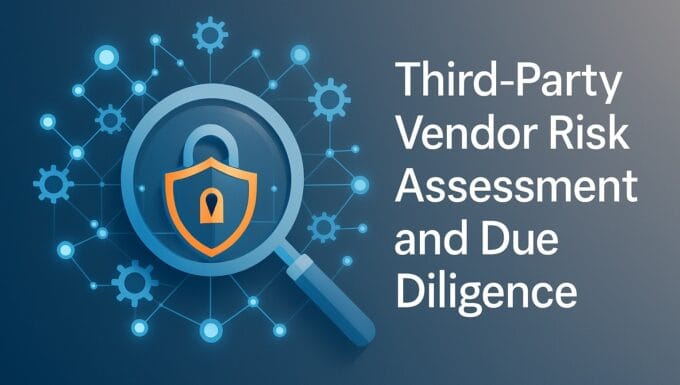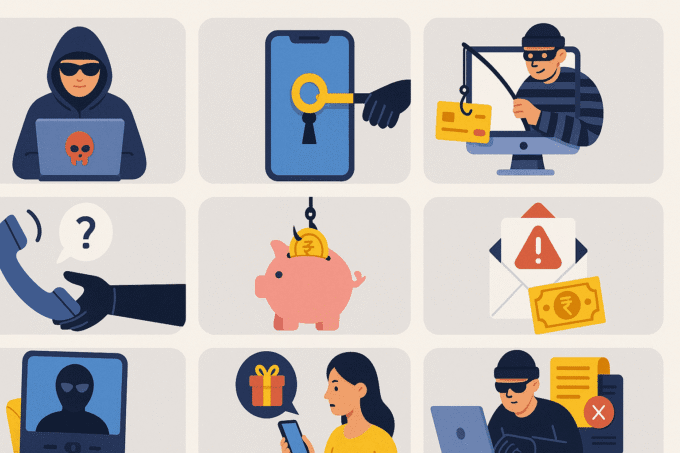We scan QR codes for everything — payments, menus, app downloads, even event check-ins. But what if that simple scan leads you into a cyber trap?
QR Code Scams, also known as quishing (QR + phishing), are one of the fastest-growing forms of digital fraud. They turn a once-convenient tool into a high-risk attack vector, particularly for the unsuspecting general public.
In this article, you’ll learn:
- What QR Code Scams (Quishing) are
- Where and how they occur
- Real-life examples
- Safety tips to protect yourself
- What to do if you’re scammed
📝 Alt text suggestion for featured image: “Fake QR code with warning symbol on smartphone screen”
📷 What is Quishing or QR Code Scams?
Quishing is a form of phishing that uses fake or malicious QR codes to trick people into scanning and visiting fraudulent websites or downloading malware.
Once scanned, the QR code may:
- Lead to a fake payment page
- Initiate a malicious app download
- Harvest your login credentials
- Launch social engineering attacks
Unlike traditional phishing emails, quishing is harder to detect because it relies on physical or embedded digital QR codes, which are not visibly suspicious.
🧾 Common Places Where QR Code Scams Happen
| 📍 Location | ⚠️ Scam Tactic |
|---|---|
| Restaurants or cafés | Fake menu QR codes leading to malware websites |
| Parking meters | Replaced QR codes redirect to fake payment portals |
| Flyers or posters | Scannable codes linked to phishing pages |
| WhatsApp/Email messages | “Quick pay” QR codes tricking users into UPI fraud |
| Office buildings/Events | QR check-in replaced with data-harvesting links |
🎯 Real-World Examples of QR Code Scams (Quishing)
📌 Case 1: Fake Parking QR Codes
In early 2024, several Indian cities reported incidents of fraudsters placing stickers with fake QR codes on public parking meters. Users scanned them to pay parking fees but unknowingly transferred money to scammer accounts.
📌 Case 2: Malware via Café Menu QR
Cybercriminals replaced a restaurant’s menu QR code with one that initiated an APK download. Victims who installed it lost access to banking apps through remote control malware.
🧠 How to Recognise a Fake QR Code
✅ Checklist to Stay Vigilant:
- QR code placed as a sticker over another? Be suspicious
- URL preview shows unusual or shortened link? Don’t click
- QR asks for login credentials? Stop immediately
- You’re being rushed or told “Scan Now or Miss Out“? It’s likely a scam
- QR downloads a file or app directly? Never install it
- Public Wi-Fi + QR code = double danger
✅ Pro Tip: Use secure QR scanners that show full URLs before opening.
🛡 How to Protect Yourself from Quishing
✅ 1. Always Verify the Source
Before scanning, check where the QR code came from. Is it official, or a sticker slapped on top of another?
✅ 2. Look Before You Tap
Many mobile scanners show a URL preview. If it looks odd, long, or shortened (like bit.ly), don’t proceed.
✅ 3. Never Enter Sensitive Info
Legitimate QR codes won’t ask for your bank credentials, OTPs, or Aadhaar details.
✅ 4. Avoid Downloads from QR Scans
Never install apps or APK files directly from a QR code. Use official app stores only.
✅ 5. Educate Others
Most victims are unaware that QR codes can be weaponised. Share this knowledge with family, especially the elderly and school-goers.
✅ 6. Use Updated Security Software
Mobile antivirus tools can detect phishing links and stop malware downloads in real time.
🧯 What To Do If You’ve Been Scammed by a QR Code
- Don’t scan it again or share the link
- Check your bank or UPI transactions immediately
- Change all passwords accessed after the scan
- Run a full mobile security scan
- Report the incident at cybercrime.gov.in
- Notify your bank or wallet provider (Paytm, GPay, etc.)
🙋 FAQ: QR Code Scams (Quishing)
❓ What does “quishing” mean?
Quishing is a combination of QR code + phishing. It refers to scams that use malicious QR codes to steal information or money.
❓ Can QR codes hack my phone?
Not directly. But if they lead you to download apps or click phishing links, they can compromise your data or install spyware.
❓ How common are QR scams in India?
Very. With UPI adoption and QR-based payments skyrocketing, scammers are exploiting it aggressively, especially in metros and tourist zones.
📢 Final Thoughts: Scan Smart, Not Blindly
QR Code Scams (Quishing) are proof that even modern tech can be turned against us. While QR codes are convenient, blindly scanning them is no longer safe. Always pause, verify, and think — especially before sharing data or money.
🟢 Want more updates like this? Bookmark our Scam Alerts & Awareness page and follow Techvis360 for real-time cyber tips and threat insights.

















Leave a comment